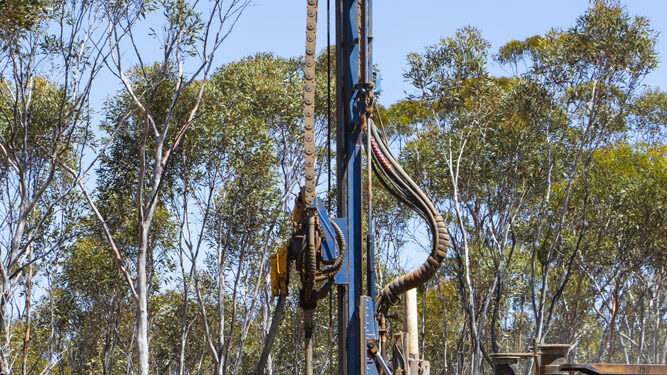Galileo Mining Ltd (ASX: GAL) has obtained further high-grade assays from recent drilling at the Callisto palladium-nickel-copper-platinum-gold-rhodium discovery within the company’s wholly-owned Norseman project in Western Australia.
Highlights
- Highest grade palladium and platinum assays recorded to date; o 1 metre @11.23g/t 3E1 (8.42g/t Pd, 2.74g/t Pt, 0.07g/t Au), 0.10% Cu & 0.80% Ni from 264m (NRCD317) within wide high- grade interval of 34m @1.87g/t 3E (1.51g/t Pd, 0.30g/t Pt, 0.06g/t Au), 0.25% Cu & 0.28% Ni from 235m
- Step out drilling 200m east of existing drill holes is underway to target the potential source of mineralization
“The latest results show that the mineralized zone at Callisto is growing and, with the highest palladium and platinum assays yet received, we believe we have only just started to understand the potential of this new discovery. Geological interpretation shows that there are multiple mineralized rock units in the area and that the source of these rocks may exist further to the east and north,” Managing Director, Brad Underwood, said.
“To test this concept we have planned a series of step-out drill holes 200m distant from the existing drilling.
“This current round of drilling will rapidly increase our knowledge of the Callisto discovery and provide the opportunity to add value both to Callisto and to the five kilometres of prospective strike length to the north.
“We are excited to be exploring a newly discovered palladium-nickel district and looking forward to the next round of results from our ongoing drilling programmes.”
Assays have been reported for 13 exploration drill holes and two metallurgical twin drill holes. All but one exploration drill hole returned a significant 3E (palladium-platinum-gold) intercept above 0.5g/t.
The disseminated sulphide mineralization at Callisto continues to demonstrate consistency between drill holes across all sections.
Logging and interpretation of drill core indicates that Callisto is a separate mineralized sill, with multiple sulphide mineralized zones, that has intruded a pre-existing mafic-ultramafic sill complex. The host sill complex has a strong magnetic signature which trends north-northeast and outcrops over a 5km strike to the north.
Callisto is a blind undercover discovery with the strong possibility of additional mineralized intrusions occurring within the 5km prospective horizon to the north.
Drilling at Callisto is now focussed on determining the size and grade of the sulphide zones, understanding the relationship with the much larger host sill, and looking for a possible source of the discovery to the east and north along strike.












